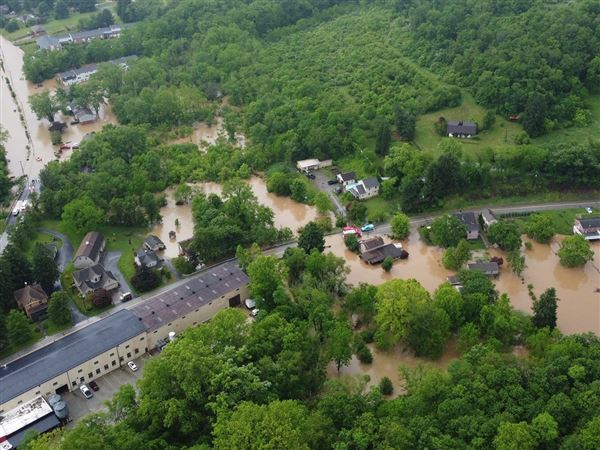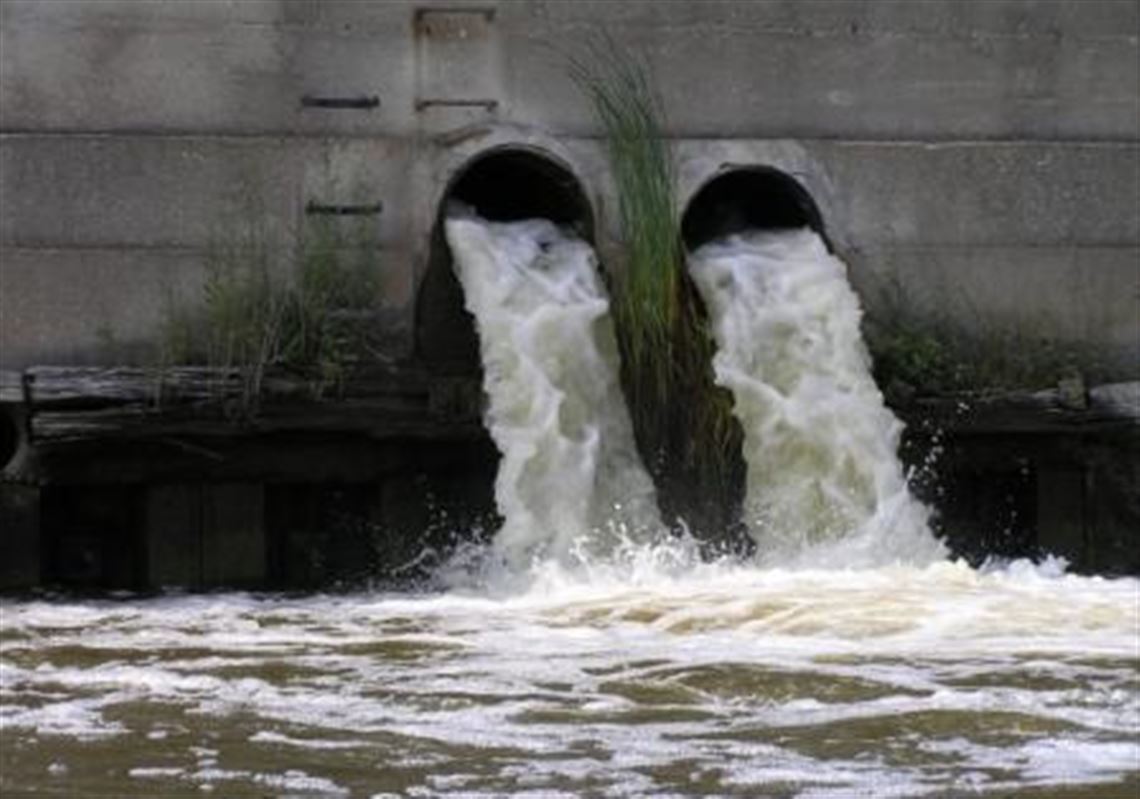City and county leaders are seeking permission to pursue a more flexible, multi-stage approach to fixing the Allegheny County Sanitary Authority’s wet weather sewage overflow problems that focuses on a $1 billion treatment plant expansion and utilizing “green infrastructure” improvements.
The request, made in a letter from Allegheny County Executive Rich Fitzgerald and Pittsburgh Mayor Bill Peduto that was sent to federal and state environmental agencies, also asks for “a 10 year window” to evaluate the effectiveness of the plant expansion and stormwater reduction efforts, and determine if any new underground stormwater collection tunnels are needed. The letter notes that preliminary planning for additional “gray” infrastructure will continue in case it is needed.
“Our goal is, number one, to expand the treatment plant, because we get a good bang for our bucks there,” Mr. Fitzgerald said Thursday. “Second, we want time to see how effective green projects will be in removing and holding back the 9 billion gallons of storm-triggered sewage overflows before we build the gray.”
Alcosan still faces a 2026 deadline, set in a consent order with the U.S. Environmental Protection Agency, for ending illegal wet weather discharges from 53 sanitary sewer overflows into the region’s rivers, and significantly reducing sewage overflows.
The decade-long adaptive management approach outlined in the Feb. 10 letter to the EPA and the state Department of Environmental Protection bumps up against that 2026 compliance deadline and likely would necessitate an extension.
“The 10-year window is what we’re asking for and we would have to see if we would need that kind of time,” Mr. Fitzgerald said. “We understand the EPA or the Department of Justice could want to shorten it.”
Use of so-called “green infrastructure” — such as wetlands, green roofs, neighborhood parks, bioswales, and permeable pavements and parking lots — captures stormwater where it falls rather than funneling it into sewers, where it swells flows and treatment costs, and causes unhealthy sewage overflows into rivers and creeks.
It’s a relatively new approach to controlling sewage overflows, but the EPA has signaled its support of it in a number of other cities with similar overflow problems.
Alcosan, which originally proposed a $2 billion stormwater control plan that relied on massive, miles-long underground tunnels to collect and hold the mixture of sewage and stormwater, now supports a “green first” option, said Alcosan Executive Director Arletta Scott Williams.
Alcosan’s original wet weather plan was judged as deficient by the EPA in 2014 because it didn’t meet water quality goals set in the federal consent order. Negotiations on a new plan and amendment to the original consent order are ongoing.
“The letter’s request for more time is in concert with what we’ve been talking to the agencies about, and would allow us to take advantage of the treatment plant expansion and give us opportunity to analyze the effectiveness of green infrastructure before we invest in additional storage capacity,” said Ms. Williams, who endorsed that approach in a letter of her own to the U.S. Department of Justice’s Environmental Enforcement Section.
Kevin Acklin, the mayor’s chief of staff, said amending the existing Alcosan consent order to allow a more flexible, cost-effective approach to stormwater control that includes green infrastructure will also provide economic development benefits to city neighborhoods.
“That’s important, given that this is the largest public works project we’re likely to see in the region for at least the next 50 years,” Mr. Acklin said. “We have to get it right given the amount of money that will be spent here.”
David Sternberg, an EPA spokesman, said the agency is reviewing the letter but declined to comment further. The state DEP said it would follow the EPA’s lead.
Jennifer Kennedy, director of the Clean Rivers Campaign and a member of Pittsburgh United, a citizens group that has advocated for a green-first approach to the region’s sewer problems, said the plan outlined by the city and county will provide the biggest benefit for communities in the Alcosan service area.
“The expansion of the plant and the installation of green infrastructure projects can have immediate effects on water quality,” she said, adding that such projects are already being planned or implemented in Panther Hollow, along Negley Run and Saw Mill Run.
Don Hopey: dhopey@post-gazette.com, 412-263-1983, or on Twitter @donhopey
First Published: February 18, 2016, 5:13 p.m.
Updated: February 19, 2016, 4:39 a.m.


















